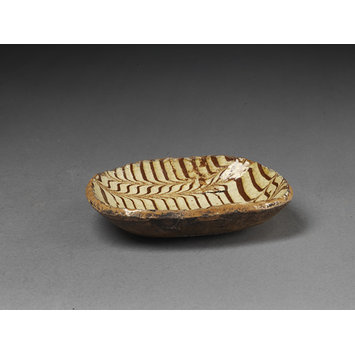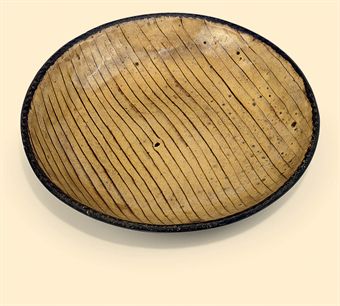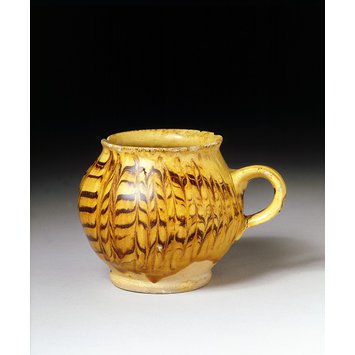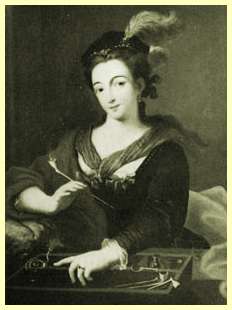This was the first type of pottery I found on the Thames foreshore in 2010, I didn’t bother to pick it up, assuming it was Victorian or even more modern. A volunteer at a Thames Festival stall with ‘things found on the Thames’ to my astonishment notionally told me it was 300 years old. Since then other foreshore explorers have suggested they weren’t that old. I was delighted when I tracked down the pictures below, which confirmed the original lady was right, very satisfying to find the name of this pottery.
This pottery is very common on the foreshore. I still find its bold, simple, rather modern bakewell tart design delightful.
 |
| Fragments of Staffordshire Combed Slipware found on Thames Foreshore |
The pieces are usually pretty chunky and apparently are earthenware with a clear lead glaze, with iron inclusions, which gives the white slip its yellowish colour. Most pieces are glazed on one side only. Whilst originating in Staffordshire, the pottery was produced in potteries across the Midlands, in Yorkshire and Bristol.
 |
| Selection of combed effects |
Several have been ‘coggled’ or ‘crimped’ to achieve a very uniform pie crust edge,
 |
| Pie crust edge of combed slipware |
The late 17th century saw the production of combware dishes and plates intended for poor to middle class kitchens and dining tables, as well as for use in taverns. The images I’ve tracked down to date show baking dishes.
 |
| Baking dish from Victoria and Albert Museum ca. 1770-1830 |
 |
| Baking Dish from Christies late 18th century |
I’ve also found a few marbled pieces, which are glazed on both sides, most likely from cups and bowls. I’ve read that combed and marbled designs tend to be more elaborate and fine-grained on early pieces than on later 18th century vessels.
 |
| Marbled slipware found on Thames Foreshore |
 |
| Cup from Victoria and Albert Museum ca. 1690 |
























